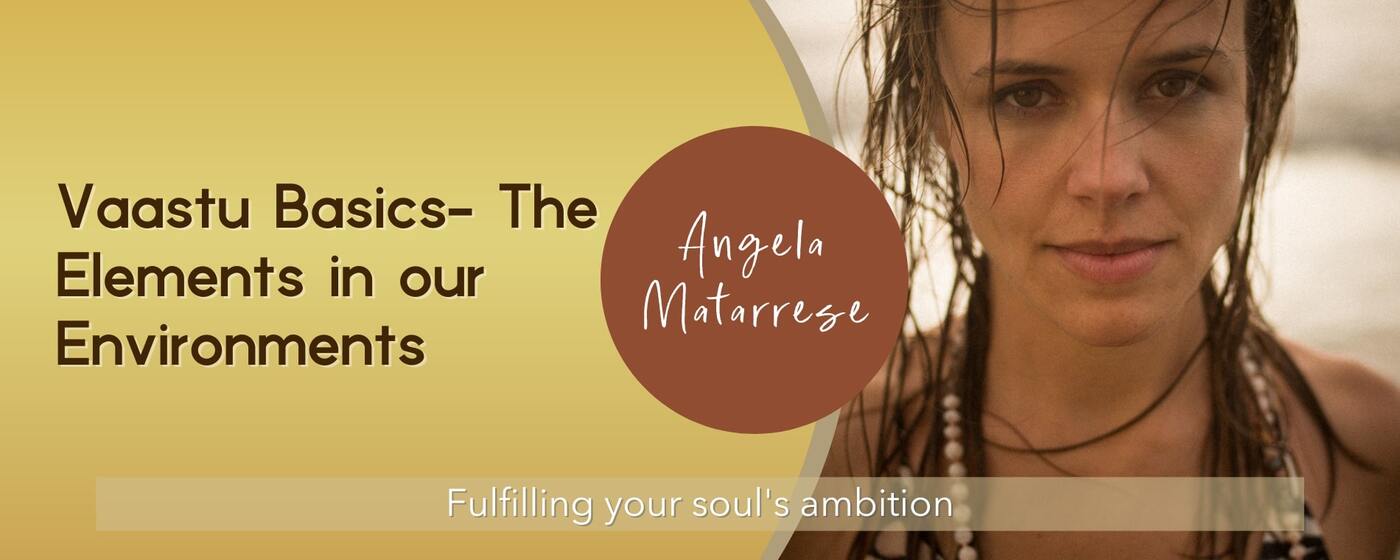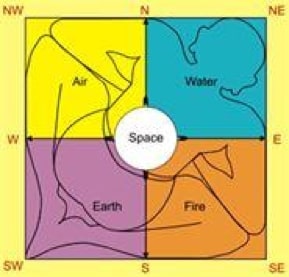
Vastu Basics – The Elements in our Environments
Vaastu Basics
I first discovered Vaastu while listening to a Yogahealer podcast years ago, where Cate Stillman interviewed Sherri Silverman. I had already been working as a Commercial Interior Designer for over a decade, and while Eastern Sciences such as Feng Shui and Vaastu were never a priority while working with commercial clients, I personally took interest in them. I had been teaching yoga and self-studying Ayurveda, so learning more about Vaastu provided an even more seamless cohesion between all my personal interests and profession.
In my self-study of Vaastu I have learned, as with most sacred ancient traditions, a teacher that understands the lineage needed to truly practice and teach it authentically and accurately. While I haven’t taken that next step yet, this article aims to serve as a starting point to those new to Vaastu. In the end, I will list my favorite basic resources, as well as the teacher and University passing on the full teachings of Vastu/Vaastu Science and Technology to those looking to further their studies.
Vastu vs. Vaastu
Before we dive in, it’s important to understand the difference between Vastu and Vaastu, as they are often used interchangeably while they have completely different meanings. Vastu is the ancient scientific term that refers to unmanifested energy. When that unmanifested or subtle energy becomes a form, it is then Vaastu. So, with just one “a” it is referring to unmanifested space or pure consciousness and with two “a”s the manifested space or stuff (alternatively: “material world”). While we can specifically relate this to architecture and building science, it can also relate to mathematics, music, quantum physic, and more! The ancient seers acknowledge that every space is a living organism with its own energy field (Vastu). This energy field has a spirit, that when manifested into music, art, building, etc., is then Vaastu. For the simplicity of this article, I will mostly be referring to the manifested form and space (Vaastu).
Vaastu vs Feng Shui
Many are familiar with Feng Shui, and the rising of Vaastu is often lumped in with it. While there are some similarities, there are many differences. Vaastu is much older than Feng Shui and is where the principles of Feng Shui came from. While the origins of Vaastu go so far back its beginnings are untraceable, Feng Shui dates to 3000 years ago when monks crossed the Himalayas from India, through Tibet, and into China with the ancient knowledge of Vaastu that gradually evolved to Feng Shui. Both practices aim to bring the optimal flow of energy in the space. Feng Shui looks to provide balance of flow by the placement of items within a space, while Vaastu creates this balance by forming the space through precise measurements or very specific architecture. So, while you can easily incorporate Feng Shui principles into your environments, a real Vaastu structure can only be constructed based on specific dimensions found in ancient texts.
Vaastu Architecture vs. Vaastu “fixes”
There are Vaastu consultants that have misinterpreted or simplified texts and offer “fixes” to structures that aren’t built and designed by a Vaastu architect. While this may serve the structural spaces aesthetically and functionally to bring greater harmony into the space, know that it will not be a real Vaastu structure without being built from very specific guidelines by a Vaastu Architect or Consultant trained in the authentic Sthapati tradition.
Cardinal Directions – Brahmam in space with the five elements
Just as Ayurveda has us look at our body and mind in relation to the five elements of how we digest life, Vaastu does the same with space. In Vaastu we look at the five elements in conjunction with the cardinal directions. There are life-supporting energies in all directions and the support for each type of activity performed in each space will depend on the energy naturally present in that area/directional zone.Life-supporting energy is generated in the Brahmastan (center zone of structure) and radiates out as the pre-manifest form of elements, which settle in the various directional zones.Activity and location in these zones must be in alignment with the natural flow of energy.
Below is an example of the Vastu Purusha Mandala representing Brahmam in space. You will see his head at the northeast region representing the water element and the base of the spine at the southwest region, representing the earth element. Northwest is the Air element and southeast is the fire element. Energy enters through the Bahmasthan or center of the building and should circulate through all of these areas.

In Vaastu, as we look at the five elements in conjunction with the cardinal directions, we can discover how the elements are supported by our spaces. As with our body and mind, the interplay of these natural elements can help or hinder the support of our activities within our environment. Referring back to the Vastu Purusha Mandala above, we see the space element in the very center representing Brahmam itself, pure consciousness, where the energy is brought in and should circulate throughout. The water element is at the northeast region at Brahmam’s third eye and the mouth is the most sacred zone for spiritual activity. The earth element at Brahmam’s base represents stability, while movement between masculine and feminine energy and transformative qualities of air and fire are on either side of Brahmam’s solar plexus. We can translate this image to our homes, offices, and each individual space within them, by finding out which direction they face and how energy flows or is blocked by walls, furniture, etc.
Where to Begin
Remember that this is just the very basics of what Vaastu is and how to start thinking about it in relation to your own spaces. While you would need to hire a properly trained Vaastu Architect or Consultant and most likely build your space from scratch to have it be a true Vaastu structure, we can still learn from the qualities that are created in various areas of our environments as it relates to the Mandala.
Begin by figuring out how your space sits on the earth. Does it line up with the cardinal directions or is it on an angle? Where is north, south, east and west?
From there, start to think about what rooms are where in relation to the elements. Start with the northeast corner. If this area is said to bring in spiritual energy, is it being blocked by walls or objects? How can you find greater clarity in the northeast? Is the southwest portion of the space wide open and allowing for the flow of energy to escape? How can you create more grounding and stable effects in this area?
You can even start to look a little deeper into the elements represented in each direction. For instance, it could be auspicious to have a master bedroom or office in the southwest corner as the earth element is prominent there. The stability of the earth element is important for supporting the head of the house. Then if we look at the Northwest, we might see this as a good place for a guest bedroom. Since the wind element is prominent here, guests should not feel the need to overstay their welcome! While the water element in the Northeast will support creative and spiritual practices, the fire element in the Southeast then becomes a supportive place for a kitchen or high-energy area.
We can also start to think about these directions in each individual room of our space and how we layout our furniture to support such activities.
Vaastu Resources
This article only touches the very basics of Vaastu, so here are some resources for going deeper!
Vastu, Breathing Life into Space by Dr. Robert E. Svoboda
Vastu, Trancendental Home Design in Harmony with Nature by Sherri Silverman
Jen Jones Architecture – Authentic Vaastu Architect While these are great resources to just get your feet wet with Vaastu, I will direct those interested in learning to bring true Vastu Architecture to the world to the American University of Mayonic Science and Technology. At AUM, you will learn the full lineage of teachings of Vaastu Science and Architecture.


